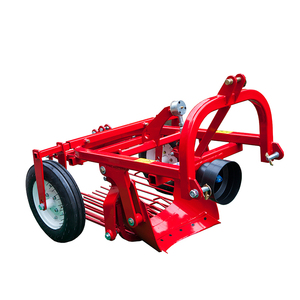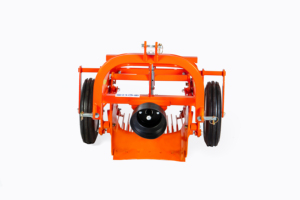
All categories
Featured selections
Trade Assurance
Buyer Central
Help Center
Get the app
Become a supplier

(645 products available)



























The small onion harvester is a specialized onion collection tool designed to streamline the process of harvesting onions. The design and type of an onion harvester depend on the cultivation scale and the desired level of automation.
Manually operated small onion harvesters
These types of onion harvesters are designed so that farmers can easily gather onions without any assistance from machines. They are made to be lightweight and simple to use, which makes them cheap and good for small-scale farming situations. Because they often don't need power or only require a little, too, they are affordable options compared to more complicated machinery. Harvesting onions by hand with tools like these allows farmers to reliably gather their crops even when they don't have access to electricity or fuel for motorized equipment.
Tractor-mounted onion harvesters
A tractor-mounted onion harvester indicates an agricultural machine specifically created for onions and other similar root crops. This device is attached to a standard farm tractor, which serves as its primary source of power and mobility. As the tractor pulls the mounted unit across the field, it cuts and collects the onions efficiently, streamlining the harvesting process. Onion harvesters are engineered to handle the delicate nature of onions, ensuring they are harvested whole with minimal damage. They can be equipped with various collection systems, such as conveyor belts or bins, to gather the harvested onions for further processing or storage.
Self-propelled onion harvesters
Self-propelled onion harvesters are specialized machines that harvest onions autonomously, meaning they have their own source of power and drive system. This allows them to move independently around the field without needing to be towed by another vehicle. These sophisticated harvesters also have a high level of automation, which means they can perform most of the harvesting tasks on their own with little human input. Their advanced automated systems increase efficiency and productivity by allowing operators to let the machine do the work of locating, cutting, and collecting onions all on its own. Self-driven and fully automated, self-propelled onion harvesters represent the forefront of agricultural machinery technology.
Harvesting Capacity:
Depending on model type, small onion harvesters can yield an average of 600 to 2000 kilograms of onions in a single hour of operation.
Detailed Specifications:
The on-farm harvesting of onions such as green onions or chives can be facilitated easily by a small onion harvester with the following specifications.
In-row Width: 10-20 cm comes with adjustable sides to match the crop width and desired row spacing.
Height: 1-1.5 m. This is based on the average height of a grown onion plant, and it is adjustable for different onion varieties and soil conditions.
Length: 2-3m canal length to ensure that the onions are adequately dug and loosened in the soil.
Weight: Around 50 kilograms so that it can be carried by two average adults or with the help of simple transportation.
Engine Power: 5-7 horsepower is enough to dig and lift onions from the ground with a simple chain pulley system.
Maintenance:
Periodic Lubrication ensures that all moving parts are consistently oiled and greased.
Fasteners should be checked regularly and making sure all bolts and nuts are tightened securely.
Inspect and Clean Blades often so that onion harvester blades can be free of any onions, dirt or soil
Storage after harvesting onions, if the small onion harvester has been made with corrosion-prone materials, it must be stored in a dry place away from moisture and dust.
Small-scale onion farming:
For farmers with a few acres or less under onion cultivation, small-scale onion harvesters are an economical solution. Their size and affordability match well with the production levels on small farms. Also, these harvesters allow efficient and cost-effective onion collection.
Organic farming:
In organic farming systems, preserving the integrity of the produce during harvest is crucial. Hand-pulled onion harvesters excel in this regard by gently lifting onions without damaging their tops or bulbs. This low-tech, labor-friendly approach aligns perfectly with the principles of organic agriculture!
Onion processing plants:
Onion harvesters play a vital role in the operations of onion processing plants. Once the onions are gathered, these harvesters can assist in efficiently collecting the onions and preparing them for processing lines. Their ability to facilitate the initial stages of onion handling sets the tone for smooth subsequent processing procedures.
Contract onion farming:
Onion harvesters provide a flexible and adaptable harvesting solution for farmers engaged in contract onion production. When time is of the essence and contracted volumes must be reached, these harvesters efficiently gather the crop, meeting the demands of both farmer and buyer.
Onion breeding farms:
Onion breeding farms rely on small onion harvesters to collect experimental onion varieties. The harvested onions are then carefully analyzed to evaluate their flavor profiles, resistance to disease, and potential for unique traits that could be developed into commercial cultivars.
In order to assist the farmers as well as the farm-related business holders in making a wise choice regarding the small onion harvester machine, here are some factors to consider.
Q1: How does a small onion harvester work?
A1: Small onion harvesters work by lifting the onions from the ground while they are still attached to the soil. The onions are then cut or pulled from the harvested bed and collected into baskets or trailers.
Q2: What are the types of small onion harvesters?
A2: There are three main types of small onion harvesters - pulling type, lifting type and grabbing type harvesters. Each of these types works differently, as explained above.
Q3: How much does a small onion harvester cost?
A3: A small onion harvester's price can range between $1,000 to $2,000 depending on the type and manufacturer of the harvester.
Q4: What are the advantages of a small onion harvester?
A4: The small onion harvester allows for quicker harvest time, as they can reduce the time taken to harvest onions by 50 to 75 percent, depending on the size of the harvester. They are also easy to use and cost-effective for small-scale onion harvesting.